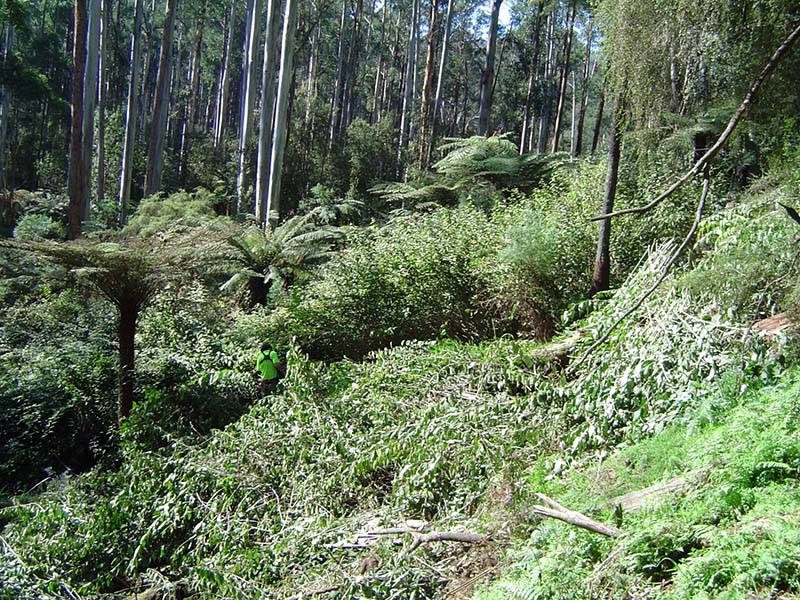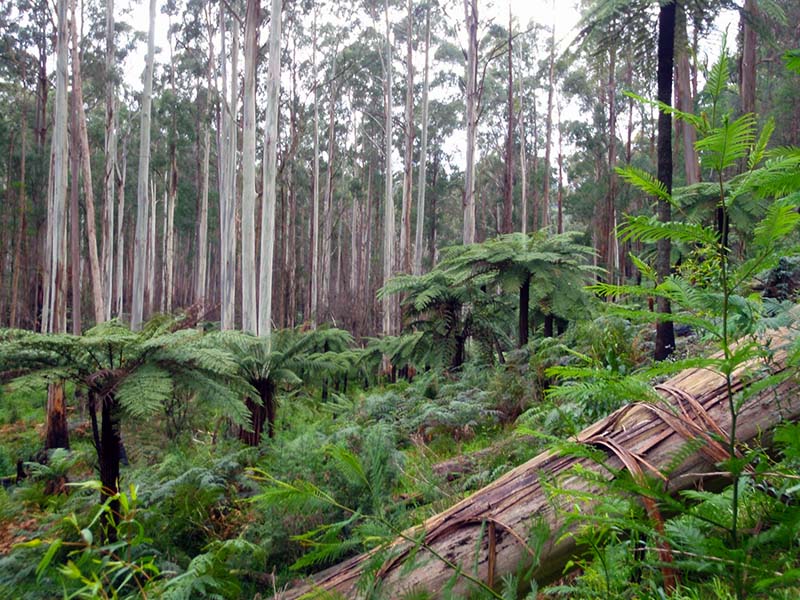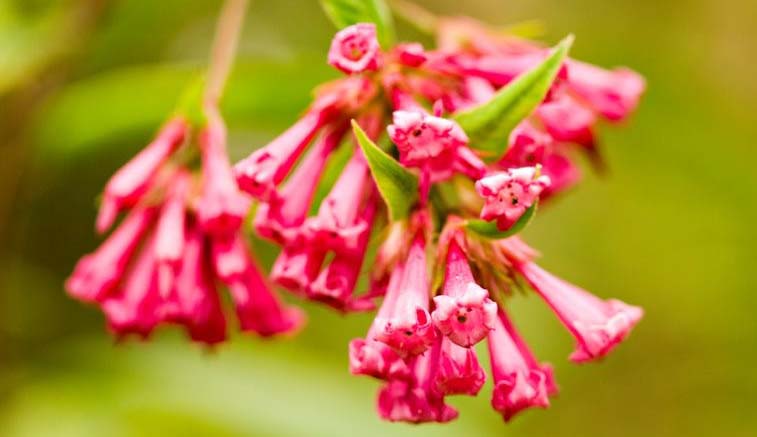A garden gone wild
Investing in protecting our native forest catchment not only protects the drinking water supply of Melbourne but is an effective way to maximises the protection of a whole range of species that occupy the forest.
A long term strategy by Melbourne Water to treat Red Cestrum, an invasive weed threatening the high-value Watts River (Source) catchment, is yielding excellent results.


“We all want to preserve nature. It doesn’t matter if you’re Melbourne Water, forest fire management, DELWP or Aboriginal people. Everyone is looking for the same goals”
Uncle Dave Wandin, Wurundjeri Elder
Red cestrum – garden glory gone wild!
In the mid 1800’s, before the upper Watts river catchment was declared for water supply purposes, a small town called Fernshaw was the home to a community of roadbuilders and loggers. Red cestrum was among the plants that made up the notable garden of the old Jefferson Hotel there. Though the town and the hotel were dismantled in the 1890’s, the garden – and the red cestrum – remained.
Over the next 100 or more years red cestrum successfully invaded the damper valleys and floodplains of the catchment, forming dense shrubby thickets that smothered the diverse native understory.

A long term control strategy is paying off
Melbourne Water began to remove Red Cestrum from the catchment in December 2006. This large scale, long-term project began with cutting down mature parent plants, then moved to removing all the seedlings that emerge from the store of seed in the soil. Cestrum seeds can survive at least ten years in the soil, so a sustained effort has been required to ensure the hard work done in earlier years is not lost over time.
Monitoring data from the 20-21 works program shows a significant decline in the presence of Red Cestrum in the catchment. As the seedbank becomes depleted, cestrum begins to disappear from the landscape and is replaced by local indigenous species of plants. The habitat for fauna returns, and the rivers, creeks and floodplains are restored.
Works are likely to be completed in 2023 but will then move into a targeted maintenance phase, where the last hotspots will be strategically re-visited to remove the remaining seedlings as they emerge.
“A continual, safe, healthy water supply is a function of a healthy, biodiverse forest."
Mark Scida, Melbourne Water
By protecting the Watts River (Source) vegetation, Melburnians can expect a high quality, biodiverse system of waterways, providing clear, pure drinking water into the future. These rivers, creeks and surrounding forests are part of a system of important reserves, that maintain habitat for a wide range of Australia’s unique and diverse plants and animals.
WATCH: Protecting Watts River
Links to the Healthy Waterways Strategy (HWS) – Yarra catchment
Watts River (Source) is a priority waterway for management and protection in the strategy. The work being done to reduce Red Cestrum in the Watts River catchment delivers the strategy performance objective of protecting and maintaining high quality vegetation through the monitoring and management of threats such as pest plants and animals.